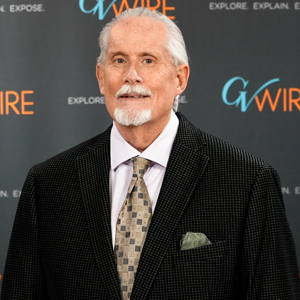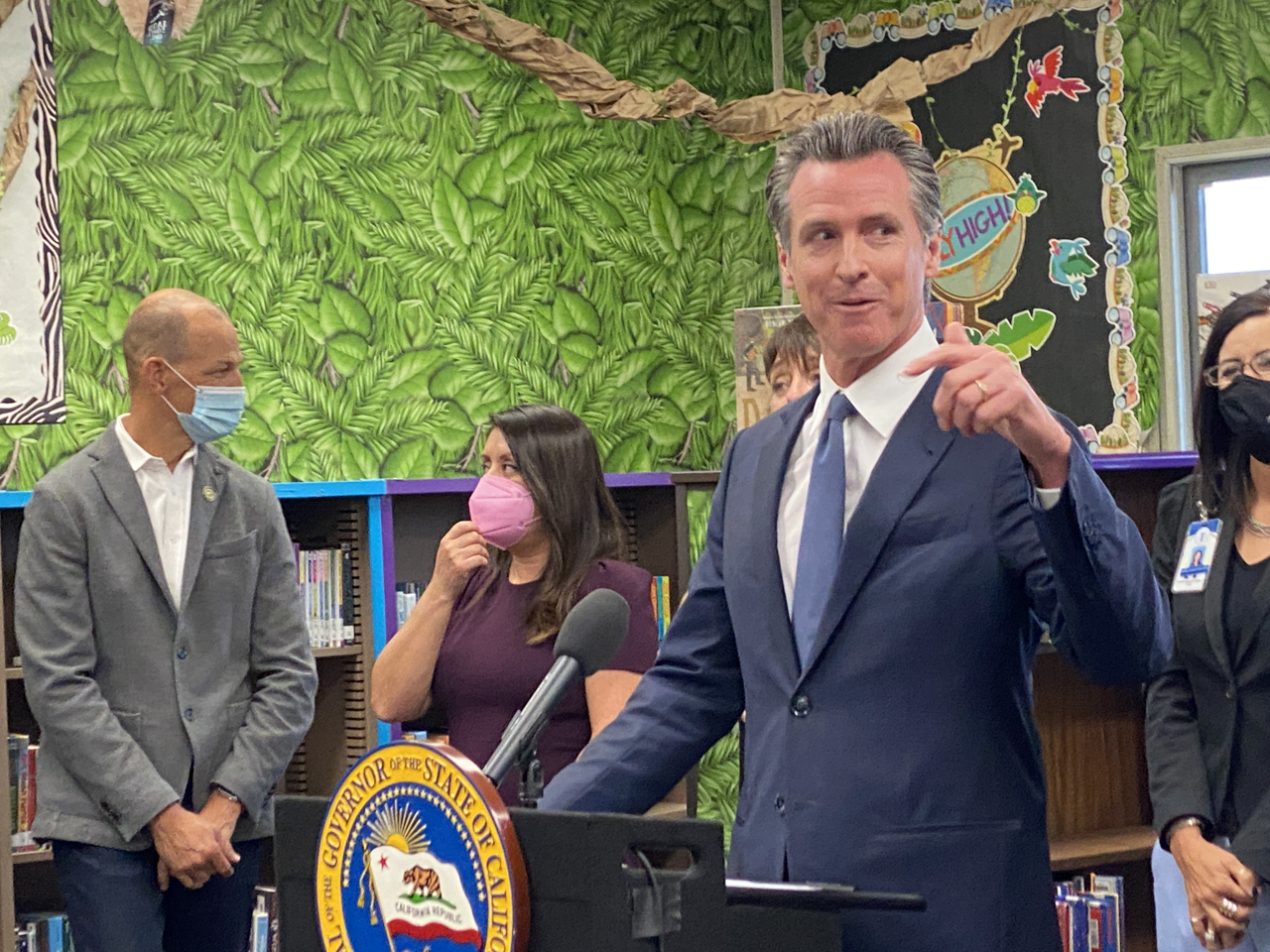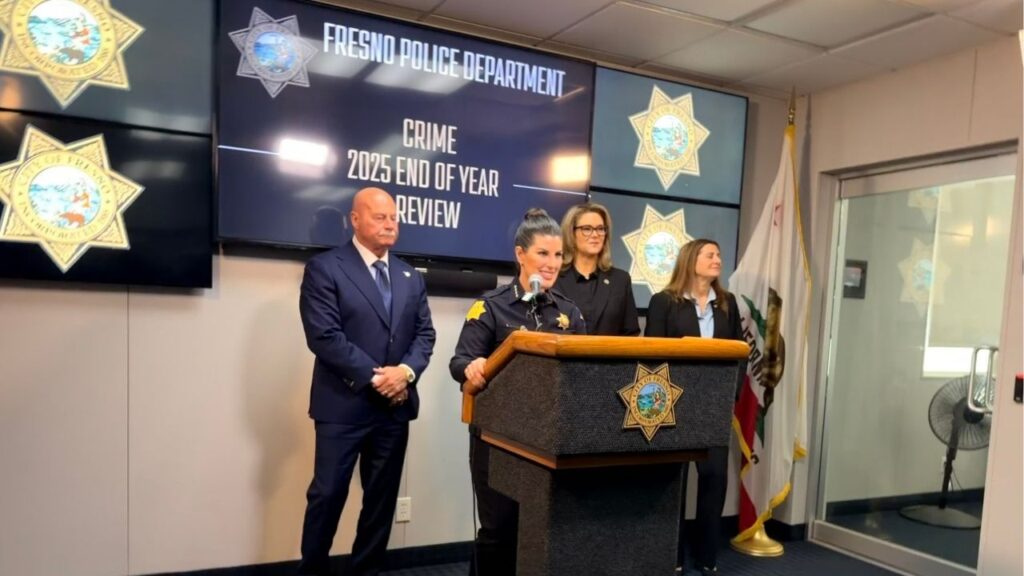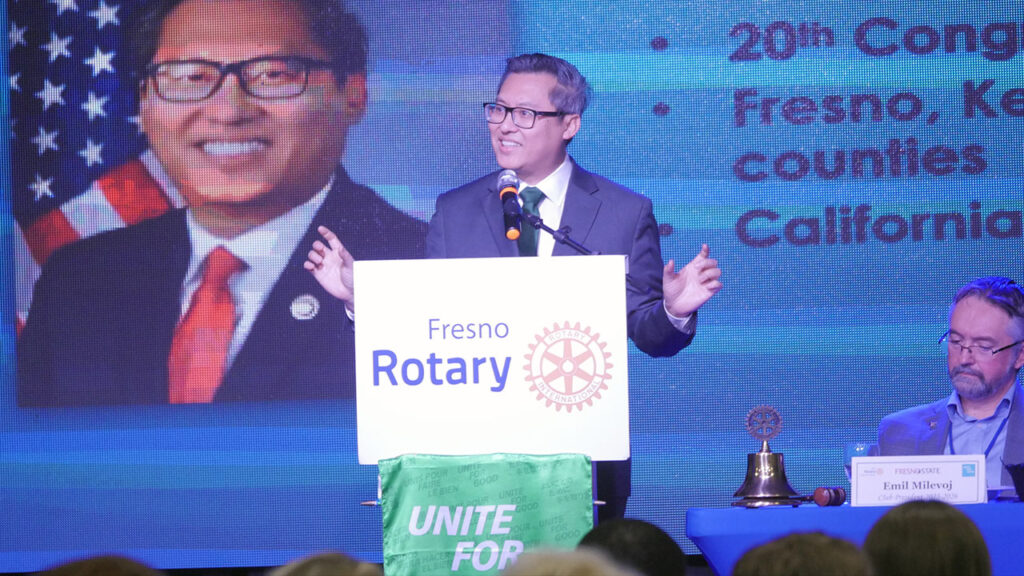Share
An unexpected number of chinook salmon swam up the San Joaquin River last spring, prompting surprise and giddy pronouncements that the river’s long-dead spring-run population had been resurrected.
To get this far, the federal government has already spent $250 million. To create a swimmable path for future spring run fish (rather than trucking them upriver), it will have to spend another $600-plus million.
That’s a hefty price tag.
Especially considering the chinook that came up the flooding San Joaquin in spring 2019 are genetic imposters that will never be able to reach elevations where true spring-run salmon once spawned.
Which begs the question of whether this is truly a “spring run” and, if not, should the river restoration shift focus?
Settlement Says …
The 2006 legal settlement that set all of this in motion states one of its goals is the reintroduction of fall- and spring-run Chinook. But if both species can’t be restored “then priority shall be given to restoring self-sustaining populations of wild spring-run chinook salmon.”
In 1988 the Natural Resources Defense Council sued the federal Bureau of Reclamation for killing off the salmon fishery when it took the San Joaquin River’s water to farms and towns in the south valley via the Friant-Kern Canal.
The lawsuit was settled in 2006 and legislation was passed in 2009 authorizing its funding and implementation, which also involved Friant contractors giving up some water to maintain river flows.
Restoration efforts have been ongoing ever since.
“Working to restore the river is worthwhile, but we need realistic goals. It needs to make sense,” said Dan Vink, executive director of the South Valley Water Association, which represents Friant water contractors and is a strong advocate of the river settlement agreement.
Is the focus on spring run realistic?
“At this point, we should have enough evidence and science to determine what a realistic goal is and have the dexterity to pivot,” he said. “A self-sustaining spring run is the most difficult of the species types to recreate. Maybe what we’ve learned is we should focus on goals that are doable and a good use of the resources.”
No Upstream Access

That may seem odd to say after this past spring when Restoration Program staff trumpeted the unexpected return of more than 500 salmon, which successfully spent the summer below Friant Dam, built redds (nests) and spawned.
That is, after all, the life cycle of a spring-run chinook.
But, genetically, those fish are fall-run chinook, according to Doug Demko, a fish biologist with FishBio.
When the San Joaquin River Restoration Program gathered broodstock in 2014, it got its smolts from the Feather River hatchery, which hadn’t separated spring- and fall-run chinook.
“Genetically, they are almost identical to fall-run salmon,” Demko said.
True spring-run chinook are unique from their fall-run cousins in that they would return from the ocean to their Central Valley home rivers in spring and spend the entire summer in those rivers before spawning in the fall.
Fall-run salmon come back in fall, quickly spawn and die.
Spring-run salmon were able to survive all summer because they swam far upriver to live in much cooler water in the mountains.
“It was a unique adaptation,” Demko said. One that cannot be recreated because Friant Dam now blocks upstream access.
The fish that returned to the San Joaquin River last spring spent the summer below Friant Dam in much warmer water than true spring-run would have been able to withstand.
A New Population
Don Portz, manager of the Bureau’s Restoration Program, acknowledged this is a newly created population — a new spring-run population, he said.
It’s a far cry from “mission accomplished,” he said. But it shows the program’s potential.
The Restoration Program has had a lot of doubters but spring 2019 showed that salmon will return to their home river with enough water. And it showed that a “self-sustaining” population of spring-run salmon can be recreated, he said.
“We had 209 redds, so you multiply that by two, we had over 500 returning fish out there,” he said. “Those numbers are huge. It gets us well on our way to having a population. Some of our fishery documents call for 500 spawning pairs. We’ve got half of that now.”
With so many more redds this year, that means the program will have even more San Joaquin River-imprinted juveniles, along with hatchery-reared juveniles, ready to head for the ocean in spring, he said. Those that survive the predator-laden gauntlet downriver will naturally return to repeat the cycle in three years, and so on and so on.
Overcoming Obstacles
That’s assuming that either the Restoration Program finishes several major-ticket construction projects to get the fish over or around several dams along the way, or California has another banner water year like 2019.
If not, Portz said, Restoration Program workers will break out their nets, rev up the tankers, head downstream, and truck the chinook back home — something the program has been doing since 2015.
“We don’t want to be in the trap-and-haul business,” Portz said. “It’s expensive. It’s better to let the fish do that work for us.”
To that end, Portz said the Restoration Program is hoping to complete several major projects by 2024:
— $337 million Mendota Pool bypass (groundbreaking 2020)
— $41 million Sack Dam fish passage and Arroyo Canal fish screen
— $1.4 million Eastside Bypass channel improvements
And that’s just to get to the end of Phase 1. Projects for Phase 2 aren’t even listed on the timeline yet.
The goal is to restore the river’s ability to handle fulltime flows of a minimum 300 cubic feet per second in dry years and a maximum of 4,500 CFS in wet years.
He understood some people have been frustrated by the time and money it’s taken to get this far. But the program has had to deal with unforeseen issues related to “seepage,” river flows causing damage to developed lands that had been dry for more than 60 years.
That alone has added years and millions of unanticipated costs to the effort, Portz said.
Fishy Photo Op
Per the settlement, that work must be completed by 2024, in time for a reassessment in 2025 when the parties can reopen the settlement and ask for changes.
“Most of the time, all the parties have been working in good faith to complete the program, especially the Friant contractors who’ve worked really well with us,” said Doug Obegi, director of the Natural Resources Defense Council. “And as 2025 gets closer, more people are recognizing the benefits of the settlement.”
In fact, the State Water Resources Control Board has noted the San Joaquin River Restoration Settlement as the reason it isn’t seeking increased flows into the Sacramento-San Joaquin Delta. It has been embroiled in a fight over increased flows from tributaries to the Sacramento, Mokelumne, Calaveras and Cosumnes rivers for several years now.
That said, Obegi criticized the slow pace and relative lack of funding from the federal government.
Cannon Michael agreed, saying the program has essentially been on life support but not much else. His family has been farming for generations near Los Banos on what was once the San Joaquin River’s braided fringes and has closely watched how the settlement has played out.
He wasn’t extremely impressed by the news of last spring’s chinook return, saying it made for a good headline, but not much else. Big water years regularly bring lots of fish into the Valley, he said.
“For those of us who’ve been here all along, we want a realistic program that’s measured and consistent,” he said. “It seems like they have a fairly long way to go. I think they’ll get some kind of fishery. But I don’t know what it will look like in the long run. Probably something sporadic, which it’s always been.”

Salmon create gravel nests to protect their eggs. (flyfishingtraditions.com)
San Joaquin River Salmon Restoration
1942 – Friant Dam completed on San Joaquin River
1951 – Friant-Kern Canal completed, taking most of the San Joaquin River water south
1988 – Natural Resources Defense Council sues U.S. Bureau of Reclamation for destroying salmon fisheries
2006 – Settlement agreement reached creating River Restoration Program (SJR Settlement Agreement Final)
2009 – Legislation authorizing restoration implementation and funding passes
2010 – Restoration efforts begin
2014 – Restoration program gathers salmon smolts from Feather River hatchery
2013-2017 – Program begins to trap and haul to trucks tens of thousands of fall- and spring-run juvenile salmon up and downstream around dams on the river
2018 – Salmon Conservation and Research Facility completed at base of Friant Dam
2019 – During spring floods, more than 500 chinook return to spawning grounds on their own
2019 – Chinook survive through summer, build more than 200 egg nests in the river below Friant Dam
About the Author
Lois Henry is the CEO and editor of SJV Water. She has 30 years’ experience covering water and other issues in the San Joaquin Valley. Henry lives with her husband, five dogs, one orange cat, and a cranky rescue mustang horse in Bakersfield.
RELATED TOPICS:
Categories

This Republican Thinks His Party Is ‘Gaslighting’ on Venezuela

German President Says US Is Destroying World Order

Trump Faces Rare Republican Opposition in Congress

















